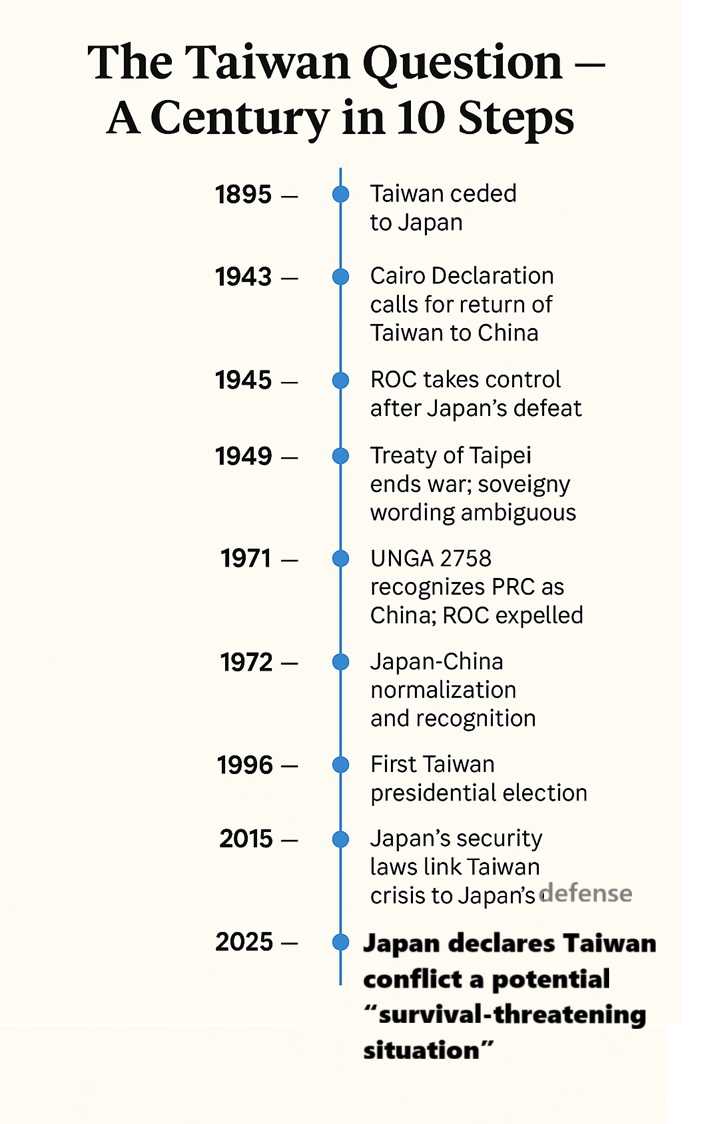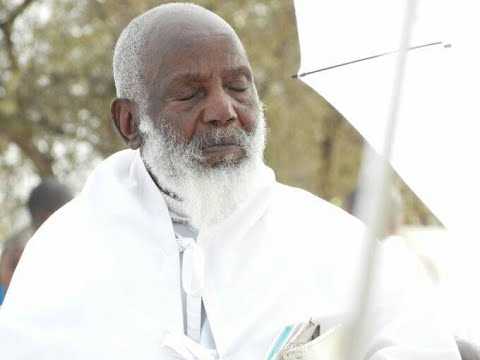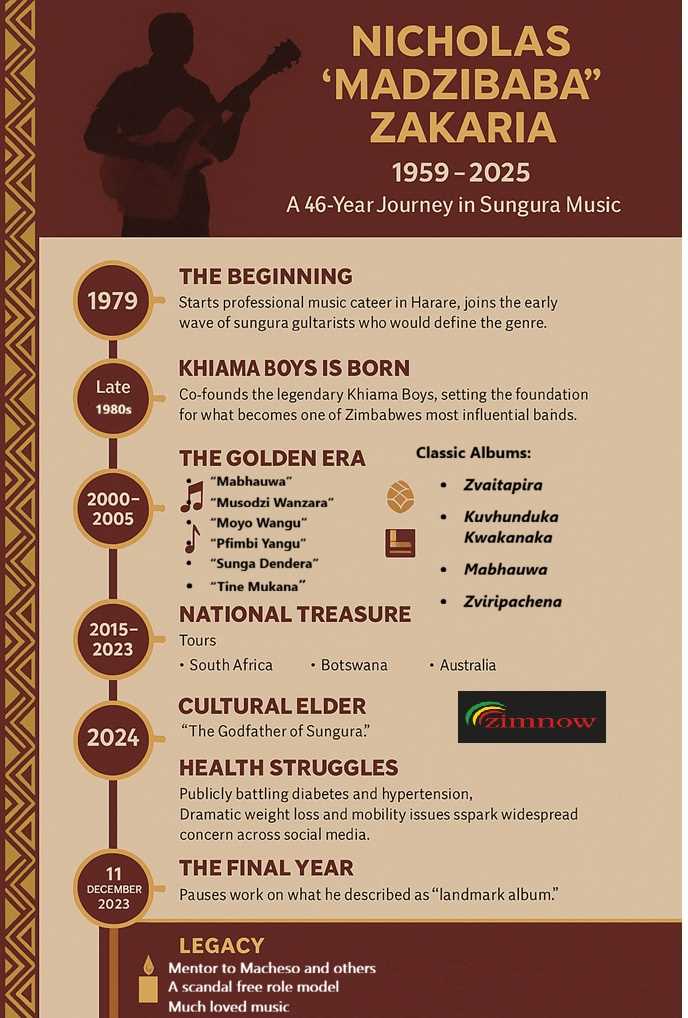
ZimNow International Desk
Tensions between China and Japan have spiked after new Japanese Prime Minister Sanae Takaichi openly linked a potential Chinese attack on Taiwan to Japan’s own security, signalling that Tokyo might respond militarily under its 2015 collective self-defence laws.
In parliament on 7 November, Takaichi said that a Chinese move to seize Taiwan could constitute a “survival-threatening situation” for Japan, opening the way for the Self-Defense Forces to act in support of allies such as the United States. Her comments ended decades of deliberate ambiguity around how far Japan would go in a Taiwan contingency.
Beijing reacted sharply. Chinese Foreign Minister Wang Yi called the remarks “shocking” and accused Japan of “crossing a red line” and interfering in China’s internal affairs. China summoned Japan’s ambassador, lodged a protest letter with the UN, and warned that any Japanese involvement in a Taiwan conflict would be treated as aggression.
The fallout has already spilled beyond diplomatic language. China has stepped up coast guard patrols and drone flights near the disputed Senkaku/Diaoyu Islands, while also issuing travel warnings that could hit Japanese universities and tourism.Trade and cultural links are being pulled into the dispute, with both governments under pressure from nationalist opinion at home.
Tokyo, for its part, insists it is not changing its formal position: Japan still recognizes the government of the People’s Republic of China (PRC) as “the sole legal Government of China” and says it “fully understands and respects” Beijing’s stance that Taiwan is an inalienable part of China, as set out in the 1972 Joint Communiqué that normalised relations. Japanese officials argue that recent comments simply interpret how Japan’s existing security laws would apply if a conflict near Taiwan threatened Japanese territory or sea lanes.
Taiwan, which has had its own government since 1949 and is still officially called the Republic of China (ROC), welcomed signs of stronger Japanese concern but criticised China’s letter to the UN, saying it distorted post-war arrangements and ignored the wishes of Taiwan’s 23 million people.
Against this backdrop, China has once again placed United Nations General Assembly Resolution 2758 at the centre of its argument, saying the 1971 vote “resolved once and for all” the question of China’s representation – including Taiwan – in the UN and left no room for “two Chinas” or “one China, one Taiwan”.
Japan, meanwhile, is tightening practical planning: it has already drafted evacuation plans for more than 100,000 residents on islands near Taiwan in case of conflict and is deploying additional missile units in its southwest.
To understand why today’s words are so charged, it helps to trace the key milestones that shape how Beijing, Tokyo and Taipei talk about “the Taiwan question”.
Key Milestones on the Taiwan Question (Objective Timeline)
1895 – Treaty of Shimonoseki
After defeat in the First Sino-Japanese War, the Qing dynasty cedes Taiwan and the Penghu (Pescadores) Islands to Japan “in perpetuity and full sovereignty” under the Treaty of Shimonoseki. Taiwan comes under Japanese colonial rule.
1912 – Republic of China (ROC) established
The Qing dynasty falls and the Republic of China is founded on the mainland. Taiwan remains under Japanese administration.
1930s–1945 – War and Allied declarations
Japan’s invasion of China leads into the broader Second World War in Asia. In the 1943 Cairo Declaration, Allied leaders state that territories taken by Japan, including Taiwan (“Formosa”), “shall be restored to the Republic of China” after victory.
25 October 1945 – “Retrocession” of Taiwan
After Japan’s surrender, ROC authorities take control of Taiwan on behalf of the Allies. Beijing later commemorates this date as the island’s “return” to China.
1949 – Two rival governments claim to represent China
The Chinese Communist Party establishes the People’s Republic of China (PRC) in Beijing, while the ROC government retreats to Taiwan after losing the civil war. From this point, both governments claim to be the sole legitimate government of “China”, including Taiwan and the mainland.
1951–1952 – San Francisco Peace Treaty and Treaty of Taipei
In the San Francisco Peace Treaty, Japan formally renounces sovereignty over Taiwan but the treaty does not specify to whom sovereignty is transferred, leaving room for later legal debate. In 1952, Japan signs the Treaty of Taipei with the ROC, confirming the end of war between them and reflecting Japan’s then-recognition of the ROC government. Beijing does not accept the San Francisco framework as valid.
Related Stories
1960s–early 1970s – Representation struggle at the UN
The PRC argues that it is the sole legal government of China and should hold China’s UN seat, including the permanent seat on the Security Council. The ROC insists it still represents China. Competing resolutions about China’s representation are debated annually.
25 October 1971 – UNGA Resolution 2758
The UN General Assembly adopts Resolution 2758, recognising the representatives of the PRC government as “the only legitimate representatives of China to the United Nations” and expelling “the representatives of Chiang Kai-shek” from the UN and all related bodies.
29 September 1972 – Japan–China Joint Communiqué
Japan and the PRC normalise relations. Japan recognises the PRC as “the sole legal Government of China” and states that it “fully understands and respects” the PRC’s position that Taiwan is an inalienable part of its territory, while “firmly maintaining” its own stance under the Potsdam Proclamation. Japan simultaneously ends official ties and the peace treaty with the ROC.
Late 1980s–1990s – Political change in Taiwan
Taiwan lifts martial law (1987) and moves towards competitive elections. In 1996 it holds its first direct presidential election, with multiple parties. Beijing maintains that Taiwan remains part of China; Taiwan’s political parties develop different views on cross-strait relations and identity.
1992 – “1992 Consensus” (contested concept)
Semi-official negotiators from the mainland and Taiwan reach an understanding often described as “one China, different interpretations”. Beijing cites this as a basis for dialogue; some parties in Taiwan later dispute whether a real consensus was reached.
2000s–2020s – Diverging politics, stable de facto status
Taiwan continues to operate with its own government, military, and foreign relations under the name “Republic of China”, without mutual recognition with Beijing. PRC leaders insist on eventual unification and oppose any move towards formal independence; Taiwan’s major parties differ on how to manage the status quo and engagement with the mainland.
2015 – Japan’s new security laws
Japan passes security legislation allowing its Self-Defense Forces to act in “survival-threatening situations” affecting Japan’s security, including in collective defence with allies. Taiwan scenarios are frequently discussed in this context, though official language remains cautious.
2024–2025 – Renewed focus on UN Resolution 2758
China steps up diplomatic efforts to promote its interpretation of Resolution 2758 as closing the door to any separate Taiwan representation in UN-linked bodies. In parallel, several Western legislatures pass motions stating that 2758 does not determine Taiwan’s sovereignty or bar its meaningful participation in international organisations.
2025 – Japan shifts from “strategic ambiguity” on Taiwan
Under Prime Minister Takaichi, Japan publicly clarifies that a Chinese attack on Taiwan could be treated as an existential threat to Japan, triggering possible military action under its 2015 laws. Tokyo also advances evacuation planning for islands near Taiwan and strengthens missile deployments in its southwest.
Beijing denounces these developments as a breach of earlier understandings and as interference in what it regards as an internal matter.
Japan insists it still respects the 1972 communiqué and the post-war order but argues that geography and alliance obligations make Taiwan’s security directly relevant to its own.
Where the China–Japan Dispute Stands Now
For Beijing, references to Taiwan in Japanese security debates are not just about one island but about post-war settlements and what it sees as attempts to “hollow out” the one-China framework built on documents like the Cairo Declaration, Potsdam Proclamation, UN Resolution 2758 and the 1972 Japan–China Joint Communiqué.
Tokyo says the combination of China’s growing military presence around Taiwan and nearby Japanese islands, plus its treaty obligations with the United States, make it difficult to stay silent on scenarios that could directly affect Japanese territory and shipping lanes.
Both governments continue to say they seek peace and stability across the Taiwan Strait. But their interpretations of the post-war documents and of what “status quo” means are drifting apart, and that gap is now playing out in the UN, in security planning, and in the rhetoric on both sides of the East China Sea.




















Leave Comments